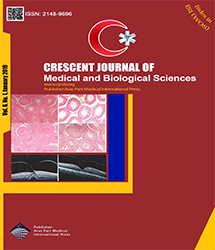| Original Article | |
| Breast Conservation From Radiation Damage by Using Nano Bismuth Shields in Chest Computed Tomography Scan | |
| Parinaz Mehnati1, Mohammad Yousefi Sooteh1,2, Reza Malekzadeh1, Baharak Divband3,4, Soheila Refahi5 | |
| 1Department of Medical Physics, School of Medicine, Tabriz University of Medical Sciences, Tabriz, Iran 2Student Research Committee, Tabriz University of Medical Sciences, Tabriz, Iran 3Stem Cell Research Center, Tabriz University of Medical Sciences, Tabriz, Iran. 4Infectious and Tropical Diseases Research Center, Tabriz University of Medical Sciences, Tabriz, Iran 5Department of Medical Physics, Faculty of Medicine, Ardabil University of Medical Sciences, Ardabil, Iran |
|
|
CJMB 2019; 6: 046-050 Viewed : 6517 times Downloaded : 3505 times. Keywords : Nano bismuth, Shields, Dose reduction, Chest CT, Image quality |
|
| Full Text(PDF) | Related Articles | |
| Abstract | |
Objectives: The present study aimed to calculate the efficiency of bismuth nanoparticles shield to protect the breast in chest computed tomography (CT) scan and investigate the alteration of image quality after using the shield. Materials and Methods: Three groups were included in this experimental research in which phantom was scanned without using nano bismuth shield (group 1), using 0.5 mm nano bismuth shield (group 2), and employing nano bismuth shield with 1 mm thickness (group 3). The polymethyl methacrylate phantom was applied to present the main organ of the chest including the breast and lung. Multi-detector 6-slice CT scan system was utilized for the tests. In addition, the breast radiation dose was measured by ion-chamber which was placed at 12 o"clock position in the phantom according to dosimetry protocol. Further, chest CT image processing was performed once without shield and once in the presence of 10% nano bismuth shield with different thicknesses. Finally, image quality was compared by adding the shield for correct diagnosis. Tests were repeated three time and data were analyzed by ANOVA. Results: Based on the results, using nano bismuth shields, breast dose reduced by 7.2% and 13.8% for 0.5 and 1 mm thickness of the shield, respectively. Furthermore, the CT number and noise increased from 121.3 to 126.36 HU and from 24.53 to 28.1 HU, respectively. Finally, the dose reduction ratio approximately doubled by increasing the thickness from 0.5 to 1 mm. Conclusions: Generally, nano bismuth shields have a noticeable potential for reducing the breast dose with the smallest change in the noise. |
Cite By, Google Scholar
Google Scholar
PubMed
Online Submission System
 CJMB ENDNOTE ® Style
CJMB ENDNOTE ® Style
 Tutorials
Tutorials
 Publication Charge
Medical and Biological Research Center
About Journal
Publication Charge
Medical and Biological Research Center
About Journal
Aras Part Medical International Press Editor-in-Chief
Arash Khaki
Deputy Editor
Zafer Akan


















